Iranian president Ebrahim Raisi arrived in Moscow on Wednesday, January 19, 2022. He has prayed in the Russian capital, spoken to Vladimir Putin, and is expected to put in an appearance at the State Duma. Though Iranian state media made much of the visit in the run-up, no outlet reported on how Putin officially received his Iranian counterpart this week. Social media users, however, have focused on pictures of the pair talking with the help of their translators.
By conspicuously praying in the Kremlin’s corridors of power, Raisi was probably trying to emulate the example famously set by the late IRGC Quds Force Ghasem Soleimani during a previous, widely-covered trip to Moscow. It does not, however, appear to have impressed the Russian president.
The very large physical distance between Raisi and Putin during their meeting has been read by many commentators as indicative. Critics of the government have also compared it to Putin's welcome to Hassan Rouhani in 2014.
The stakes on this trip are reportedly high – for Tehran, at least. Raisi is expected to encourage Putin to sign up to a proposed 20-year bilateral agreement, not dissimilar to the wildly controversial Iran-China deal. There has also been talk of a bid to strengthen financial cooperation between the two sanctioned states.
Iranian state-controlled media have scrambled to prematurely present the visit in a positive light. On its front page on Thursday, the ultraconservative Iranian daily Kayhan ran with the faux-gleeful headline "US and Western Concerns Over New Chapter in Iran-Russia relations". The accompanying editorial stated: “The economic superpower of the world and the powerful Islamic Iran are completely different from the situation of the Iran of the Qajar era."
Earlier in the day, the Revolutionary Guards' Tasnim News Agency criticized remarks by Iranian foreign minister Hossein Amir Abdollahian, who had signalled Iran could make simultaneous overtures to “East and West”. This idea being promoted, Tasnim said, could damage attempts to forge more comprehensive relations with Eastern countries.
Prior to the trip, Raisi had held a meeting with former foreign ministers Ali Larijani and Saeed Jalili. The newspaper Sharq speculated that the reason ex-foreign minister Mohammad Javad Zarif was not also invited was probably his disparaging remarks about the Kremlin – to whit, that it had opposed the JCPOA and Ghasem Soleimani’s visit to Moscow aimed to sabotage the nuclear deal – in an audio file leaked last year.
Key Past Visits by Iranian Officials to Moscow
In June 1989, Akbar Hashemi Rafsanjani undertook probably the most important presidential visit to Russia in the two countries’ recent history. After the trip, Friday Imams stopped including the slogan "Death to the Soviet Union" from sermons.
Nasser Nobari, Iran's then-ambassador to the Soviet Union, said that during the visit, Mikhail Gorbachev had asked Iran to submit a list of its material requests. "Members of the military did not know what Russian items to order,” he said. “The next day, when we had a private meeting with Gorbachev and he saw the list, he said the items was old and they now had more modern equipment... He corrected the list."
Officials of the Islamic Republic have since claimed that the biggest military contract in Iran’s known history, worth 10 billion dollars, was signed between the two states. The trip came in the aftermath of Russia’s support for Iraq in the Iran-Iraq War, making the outcome all the more astonishing.
The official visits continued under President Mohammad Khatami, who hailed his own trip to Moscow in 2000 as a “new chapter in relations between Iran and Russia”. His government also sought to improve relations with Western countries. But the Iran-Russia relationship could only become so close: at all times, contacts were constrained by the ongoing negotiations about jurisdiction over the Caspian Sea.
Putin’s ‘Nuclear Message’ and a PR Mess
In 2007, Vladimir Putin paid his own, significant visit to Tehran. He was the first Russian premier to have done so since Joseph Stalin came to the Iranian capital to attend the Tehran Conference, alongside Winston Churchill and Franklin Roosevelt, in 1943. Less than helpfully for the Iranian regime, not long before the trip, theories circulated that Putin might be subject to an assassination attempt in Tehran.
Mahmoud Ahmadinejad's government had embarked on an “East-facing” strategy, making the rumors something of a setback. Ali Larijani, as secretary of the Supreme National Security Council and then chief-nuclear negotiator for Iran's nuclear program, then told the media that during his trip, Vladimir Putin had been “carrying a message” for Iran on the nuclear issue. These cryptic remarks, and mention of the message, saw Larijani dismissed from his negotiating role.
The newspaper Jomhuri-e Eslami then wrote that Putin had discussed his “proposal” with the Supreme Leader of the Islamic Republic in person. This, the newspaper said, showed Putin was well-acquainted with the real power structure in the Islamic Republic of Iran and did not wish to deal with the middle-men in government.
An affronted Ahmadinejad then entered the fray himself, saying of Larijani’s remarks: “Putin did not bring a nuclear message to Iran."
Years after this vexing encounter in 2015, Putin would pay another visit to Tehran for the Gas Exporting Countries Forum summit. He made headlines by meeting again with the Supreme Leader in person in 2015 and gifting him an old copy of the Quran, together with the promise of strengthened economic ties.
Ahmadinejad’s Visits to Moscow
Mahmoud Ahmadinejad's visits to Moscow were always eventful. In June 2009 he attended the Shanghai Cooperation Organization’s summit as head of state, even as protests raged in Iran over his contested re-election to a second term.
Then in 2013, after another visit to the Russian capital for the Gas Exporting Countries Forum summit, Iranian media reported that Mahmoud Ahmadinejad had presented something called the "Intelligent Surgical Navigation System" to Putin. The “system”, it was claimed, had been developed and patented by Iranian experts and was unavailable anywhere else in the world, including the US.
“This system,” ISNA wrote, “allows the surgeon to perform complex neurological and spinal cord surgeries with the least error, and as a locator system, helps the surgeon with an accuracy of one millimeter."
Whether this presentation had interested Moscow in the slightest was never divulged, but some media outlets described Putin's behavior during his meeting with Ahmadinejad as "strange." Pictures of conversations between the two presidents were released, showing that while Ahmadinejad was talking, Putin repeatedly glanced down at his hands, hunted for something in his pockets or scratched his head.
No stranger to pageantry, despite the purpose of the visit, Ahmadinejad had come to the Russian capital with a retinue comprising around 100 people, including ministers, aides, MPs and their wives.
A Surge in Contact Over Geopolitical Affairs
Mehdi Sanaei, Iran's ambassador to Moscow under Hassan Rouhani, made a bold assertion during his tenure: at no point in the last 500 years had the level of dialogue between Iran and Russia been so high. Six years down the line, he claimed, Putin had visited Iran three times, Hassan Rouhani had gone to Russia five times, and the two had met face-to-face 17 times.
Foreign Minister Mohammad Javad Zarif had also traveled to Moscow on more than 30 occasions. "I have so many trips to Moscow that I have forgotten the number," he told a news conference with his Russian counterpart, Sergei Lavrov.
One of the driving forces behind the ramped-up exchange was the roller-coaster of JCPOA negotiations – as well as the increasing level of military adventurism on the part of both states in neighboring countries.
In addition to government officials, Ali Shamkhani, the secretary of Iran's Supreme National Security Council, Mohammad Hossein Bagheri, chief of staff of the Armed Forces, and Ali Akbar Velayati, the Islamic Republic's Supreme Leader's adviser on international affairs, repeatedly carried Ayatollah Khamenei's messages to Putin in this period.
Russia’s Tepid Welcome of Latter-Day Officials
Not all Iranian officials have enjoyed the same reception from the Kremlin. The only speaker of the Iranian parliament to receive a genuinely warm welcome was Ali Larijani; the atmosphere when current speaker Mohammad Bagher Ghalibaf and predecessor Gholam-Ali Haddad-Adel travelled to Moscow was distinctly frostier.
Of the latter’s visit in 2005, Akbar Hashemi Rafsanjani later said on January 1 of the following year: “When Mr. Haddad went to Russia, I was really ashamed and upset. His speech in the parliament was cancelled, the prime minister cancelled his meeting with him, and Putin refused to meet him."
Key sticking points in the relationship have been the fate of Bushehr Power Plant and carving up the resources of the Caspian Sea. Recently it emerged that Russia had opted to stop work at Bushehr for no fewer than 22 months, believed to be linked to payments owed to Russia by Iran.
This has not stopped Iranian diplomats hailing Raisi’s visit to Russia as a chance to deepen economic ties, with one ex-ambassador even suggesting a shared sanctions-busting bank could be on the cards. Then there is the matter of the proposed 20-year agreement, whose terms so far are opaque. How the Kremlin will respond to any of these proposals – or indeed the figure of Raisi himself – remains to be seen.
Related coverage:
Iranian Diplomats Sing Putin's Praises as Raisi Heads to Moscow
Iran and Russia, Part II: Russia's Janus-Faced Role in Iran's Nuclear Program
Iran and Russia, Part I: What Khamenei Took From the Collapse of the Soviet Union
What's Going on With Russia and Bushehr Nuclear Power Plant?
Iranian Official: Moscow Won't Let Us Extract Gas From Our Territory
The Future of Iran’s Caspian Sea Territory
The Tale Behind Putin’s Trip To Tehran
visit the accountability section
In this section of Iran Wire, you can contact the officials and launch your campaign for various problems




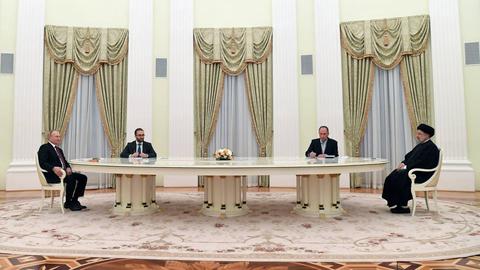
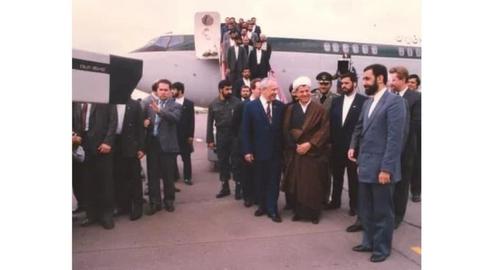
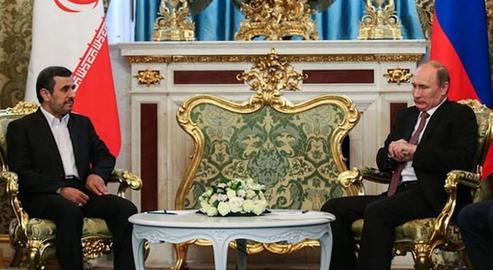











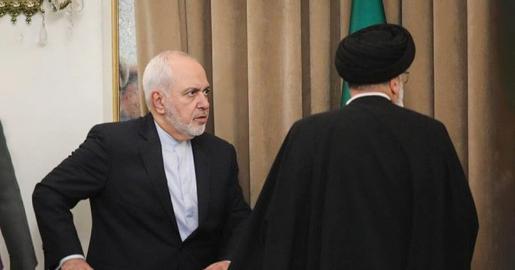
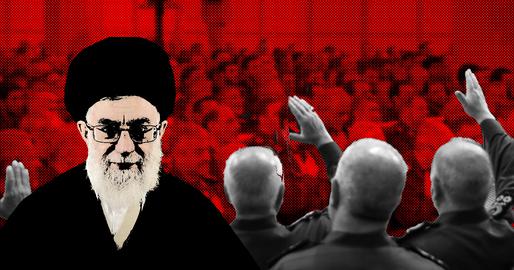







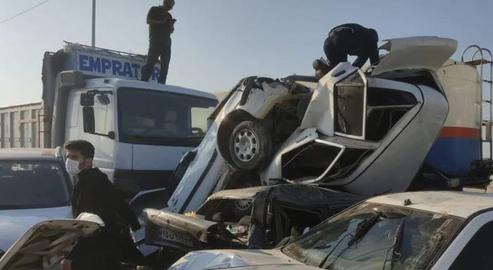
comments